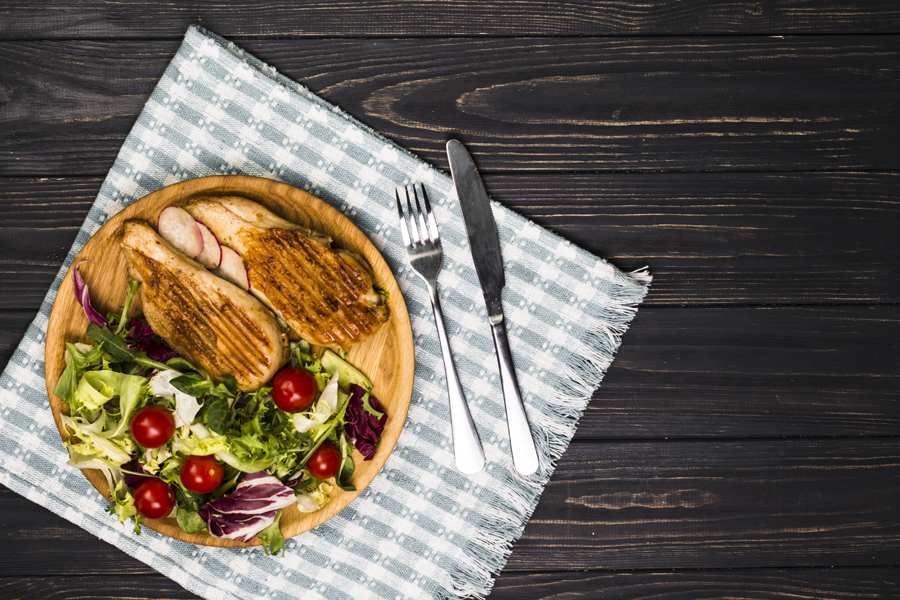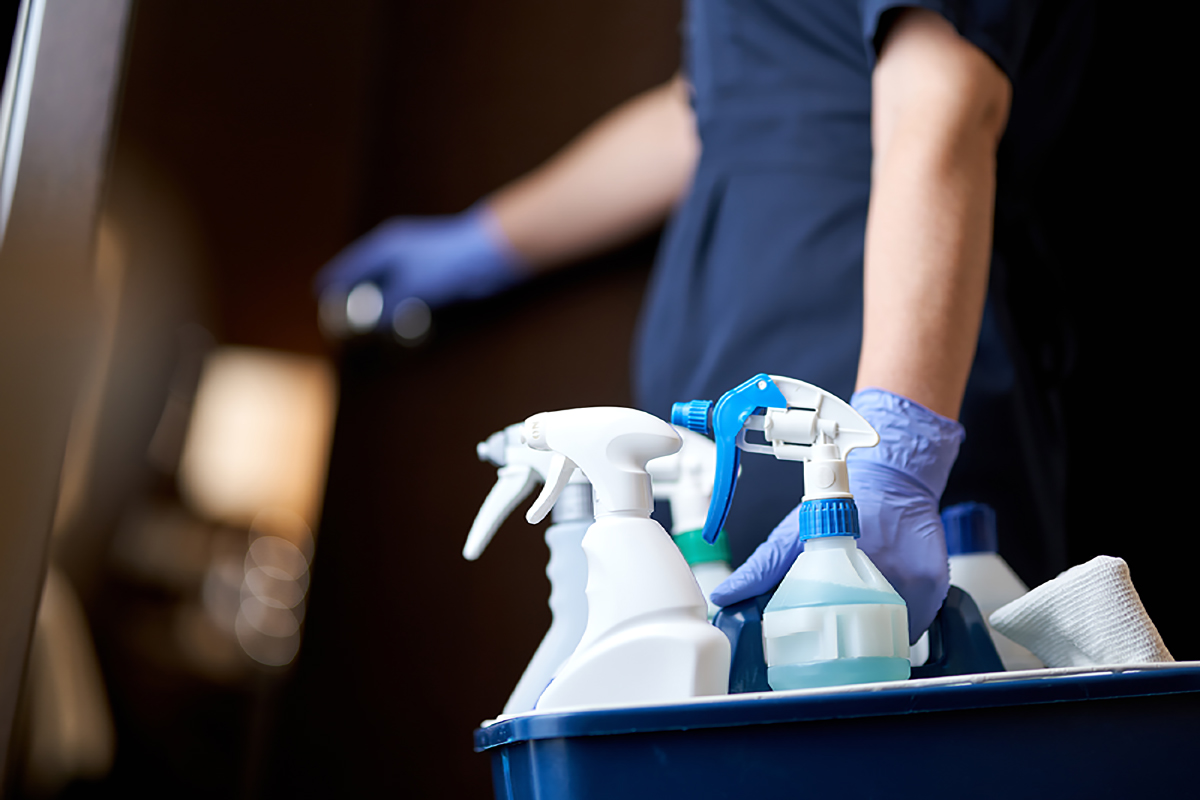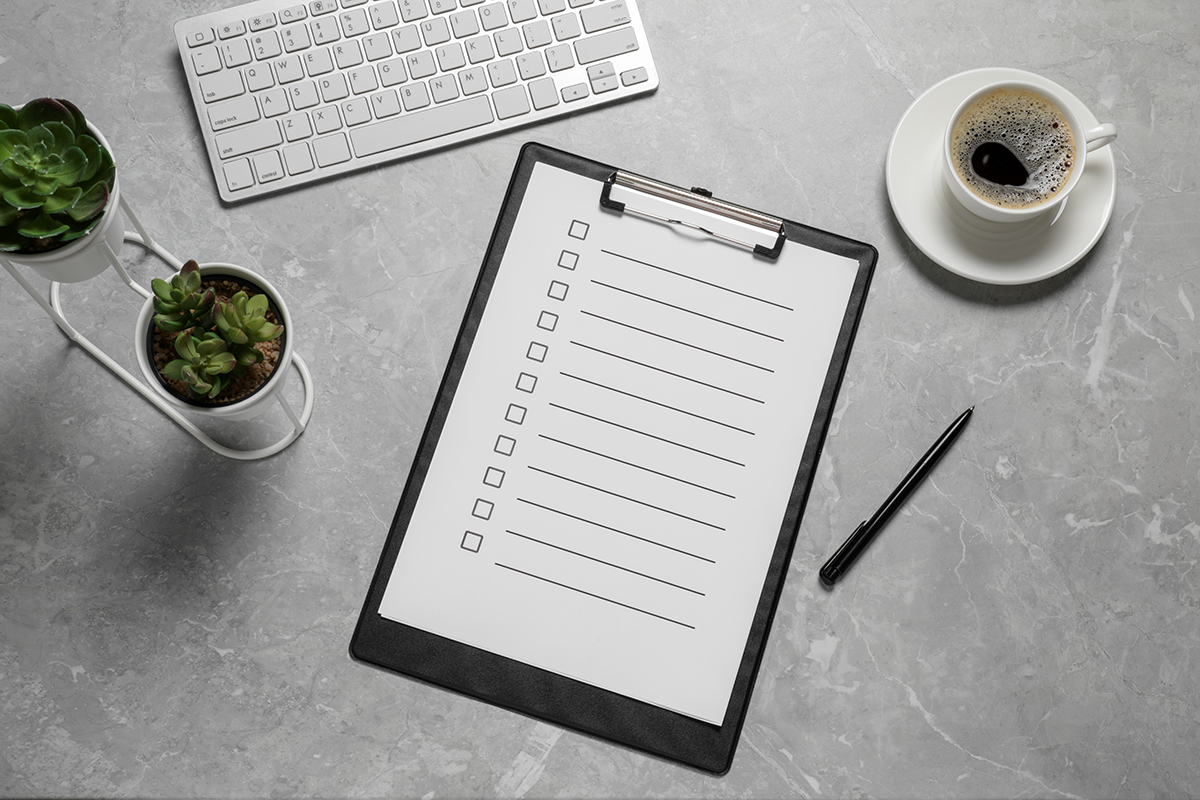People take several steps to live healthier lives, including exercising and adjusting their work schedules to include relaxation. When adjusting their lifestyle, one of the most frequent factors people consider is their diet. Knowing what you eat every day can enable you to take the necessary steps to make some changes. This necessitates the need for a good tracking tool.
The best tool that you should consider using is a food log template. However, you must understand what it is, why it is essential, and its advantages and disadvantages for it to be effective. This article will make it easy to understand what it is and how to use it.
What is It?
A template for logging food intake is a monitoring tool that enables you to track your meal intake regularly. It is often used when trying to lose weight or changing your diet. It contains information on how much you consume, the time and location, how you felt before, during, and after each meal, and whether someone shared it with you. Doctors and dietitians may sometimes recommend this template to understand your eating habits better. Healthcare providers may also use it to identify what food or ingredient your body may be sensitive to.
The log template can be used for a few days, weeks, or even longer. Other terms for this sheet include:
- Food Journal
- Food Diary
Free Food Log Templates
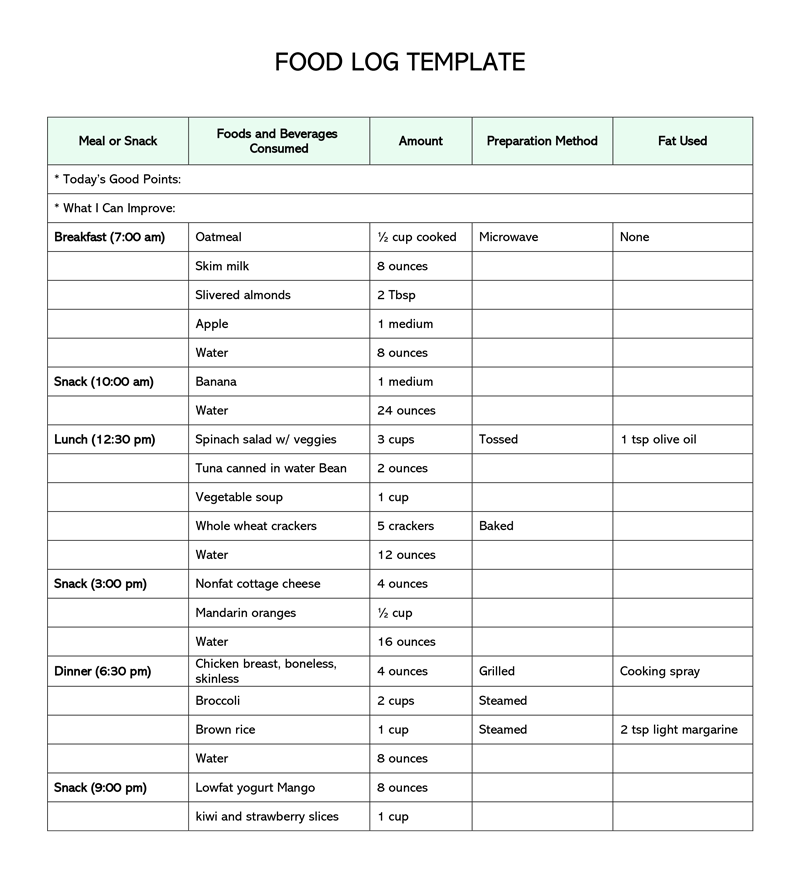
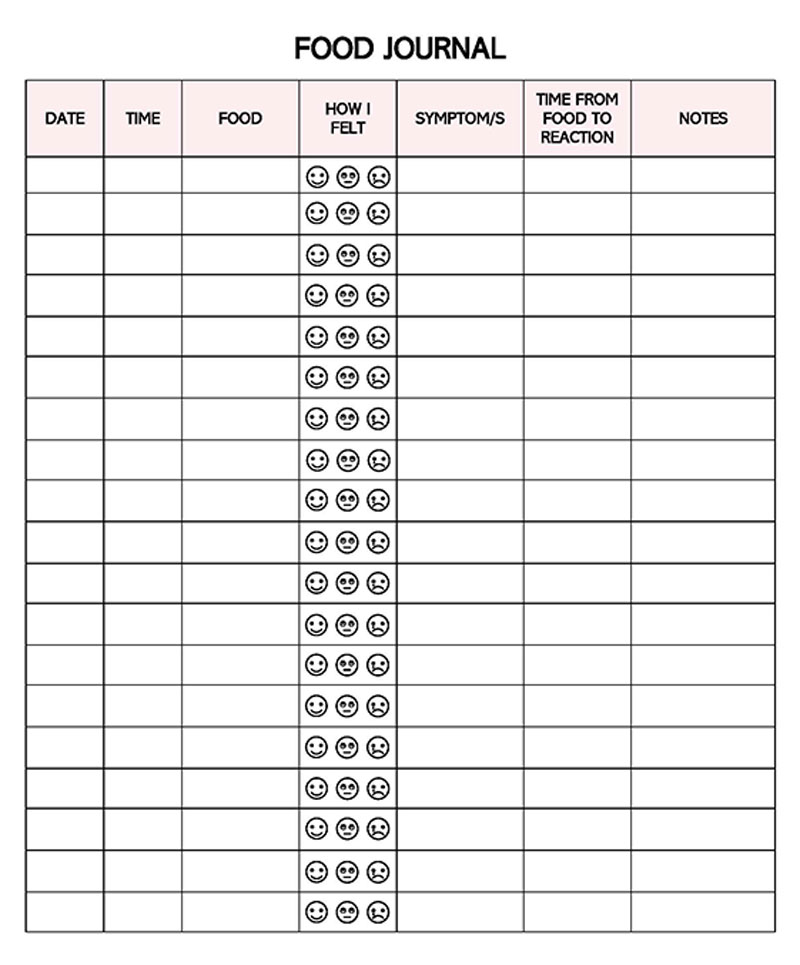
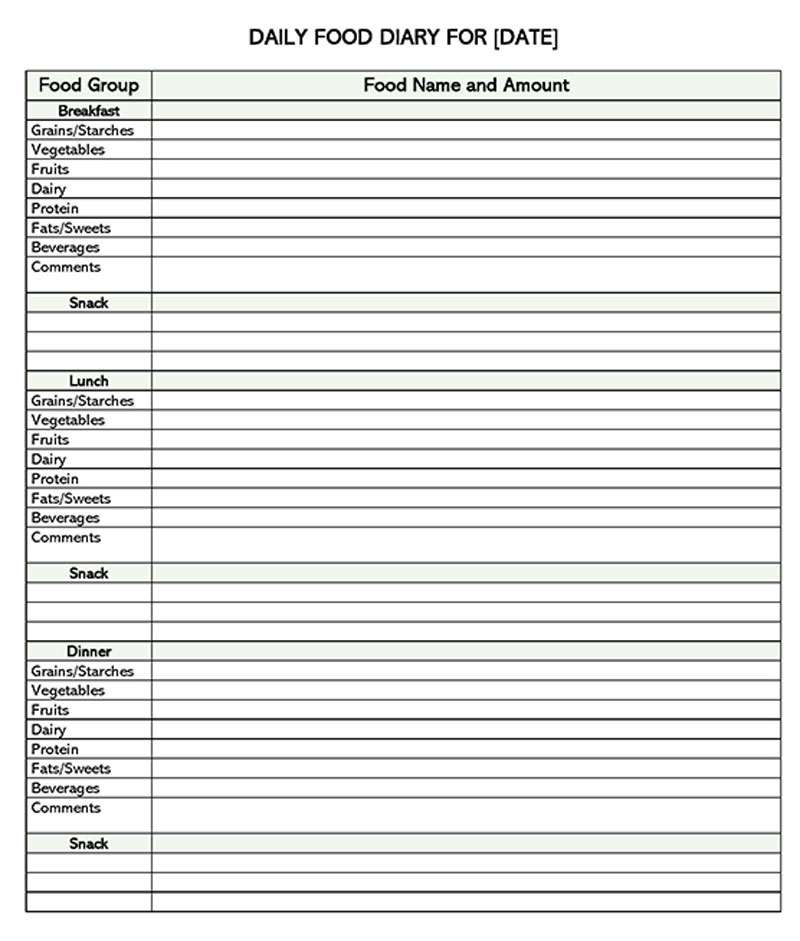
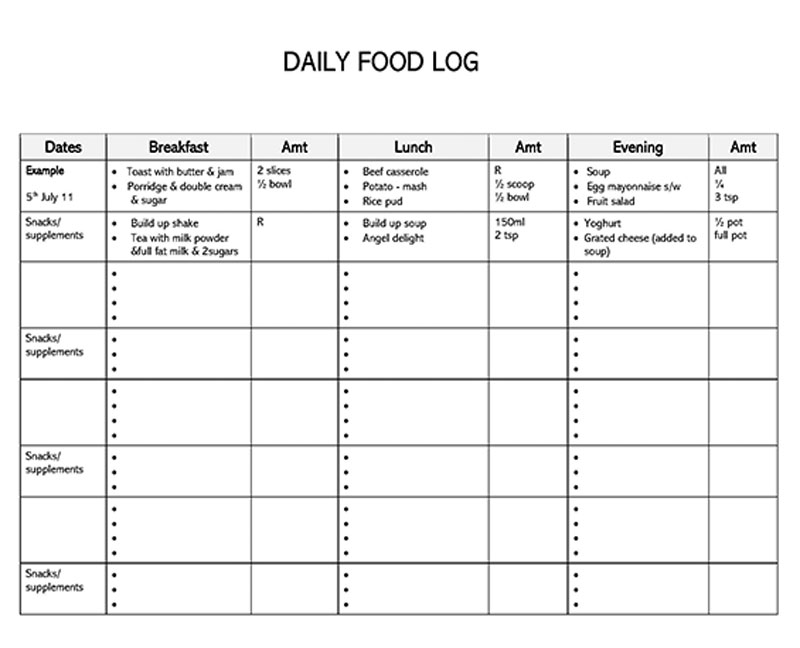
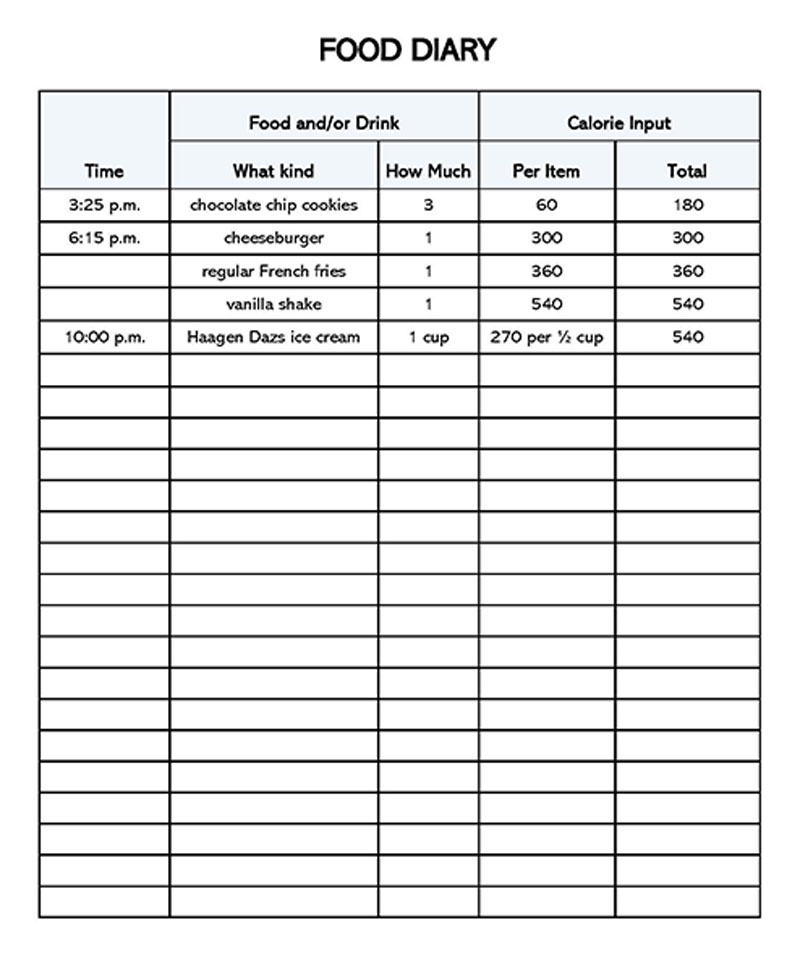
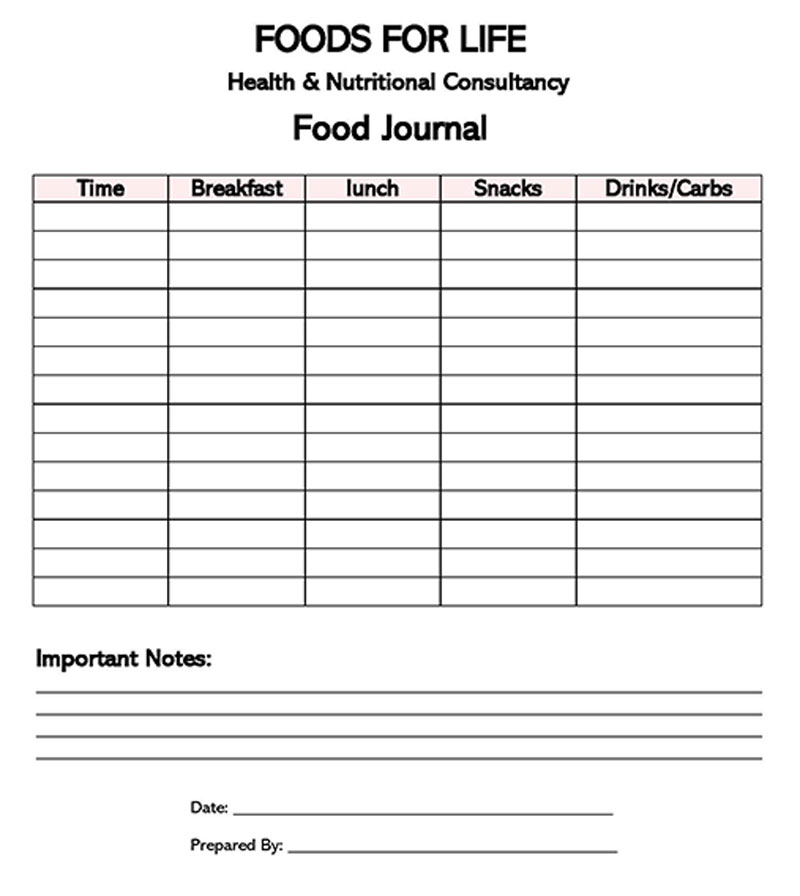
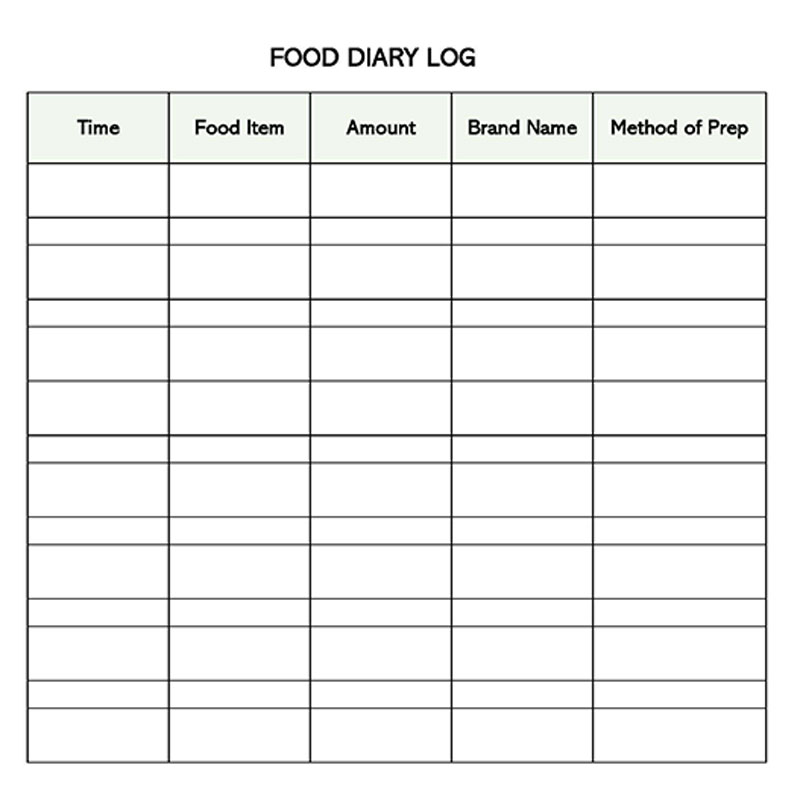
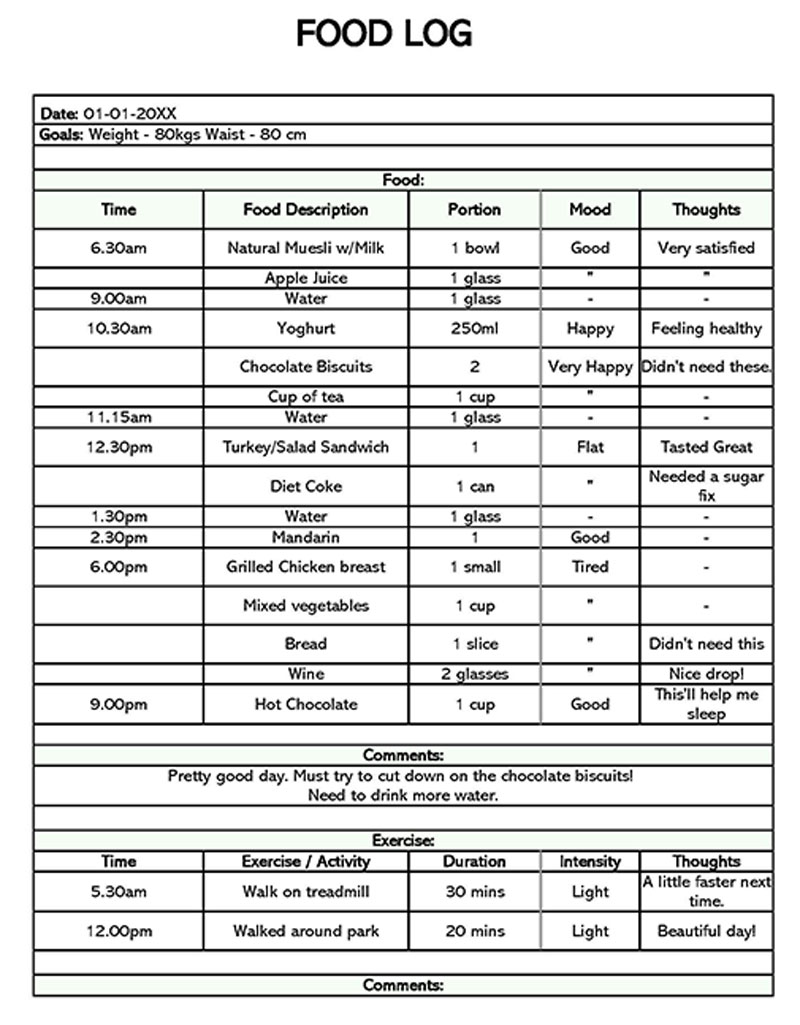
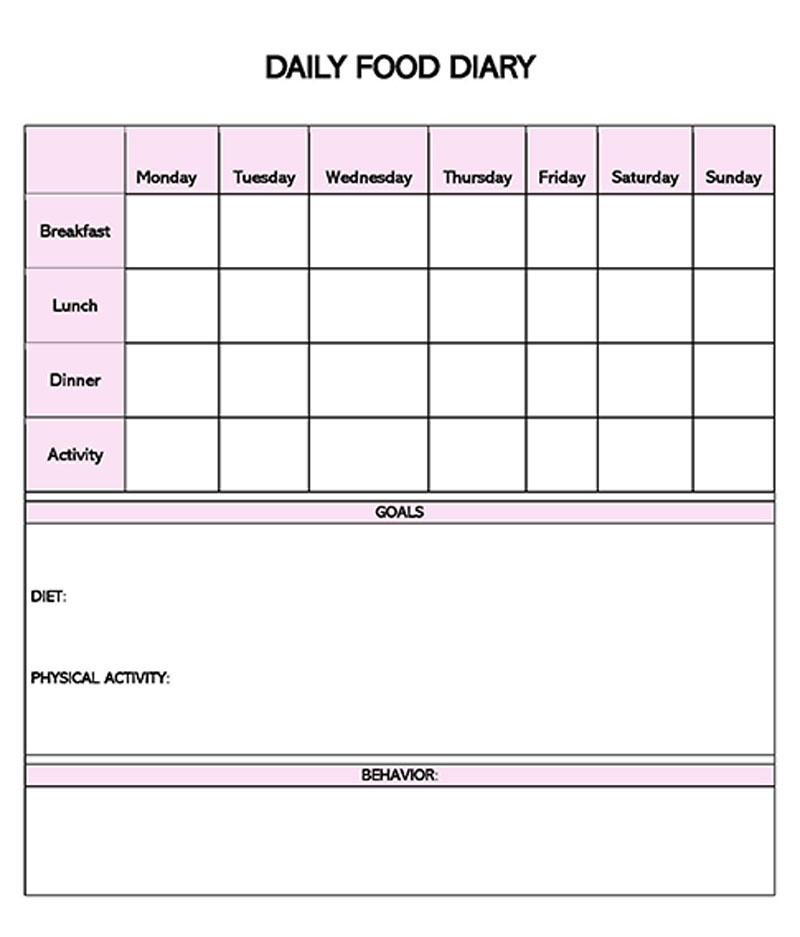
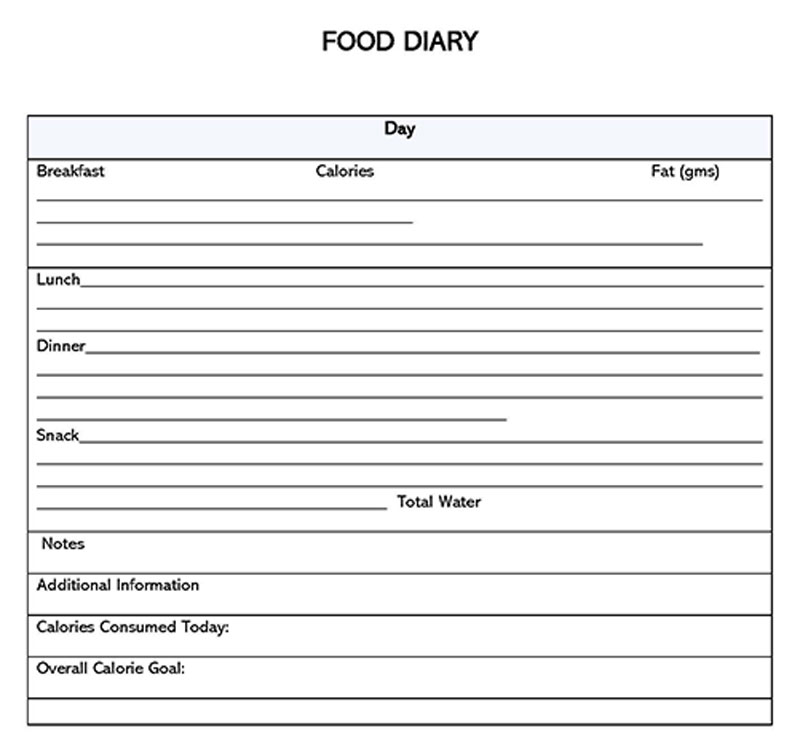
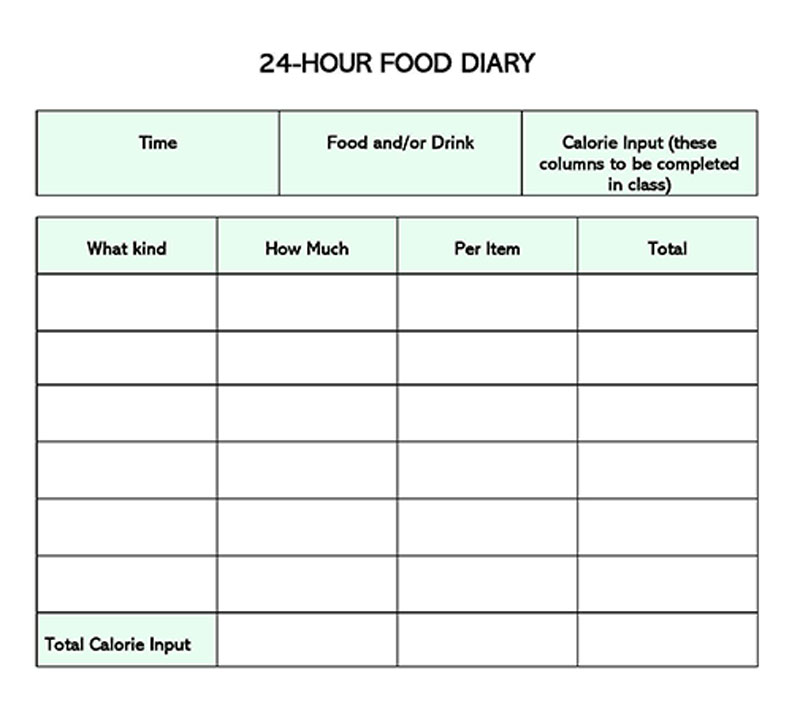
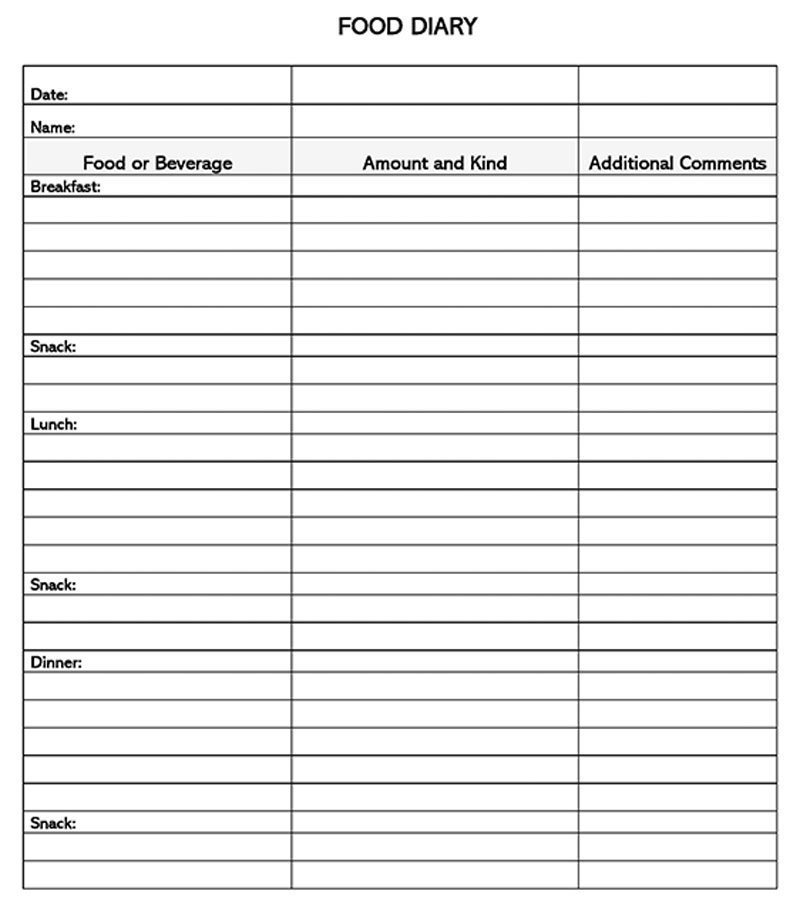
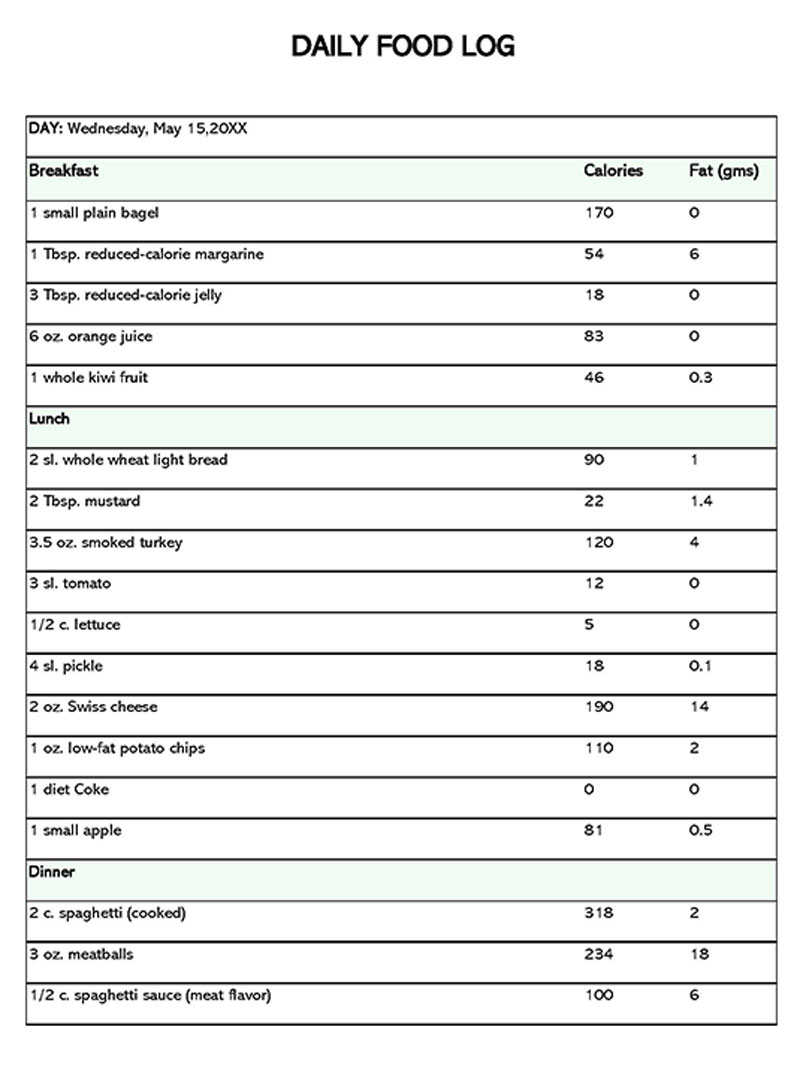
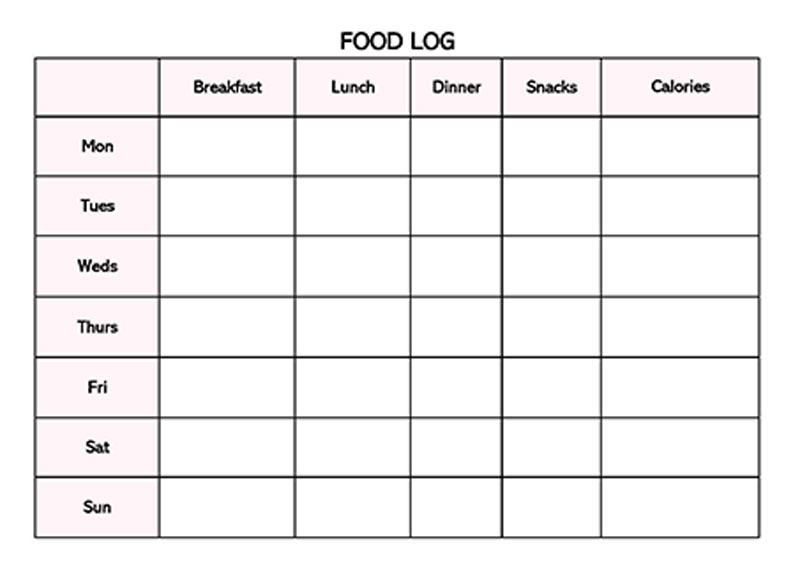
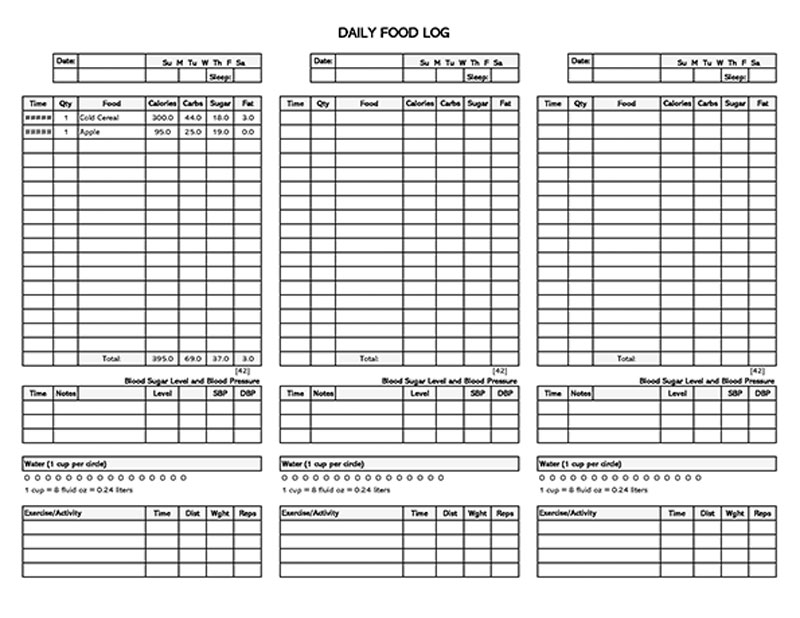
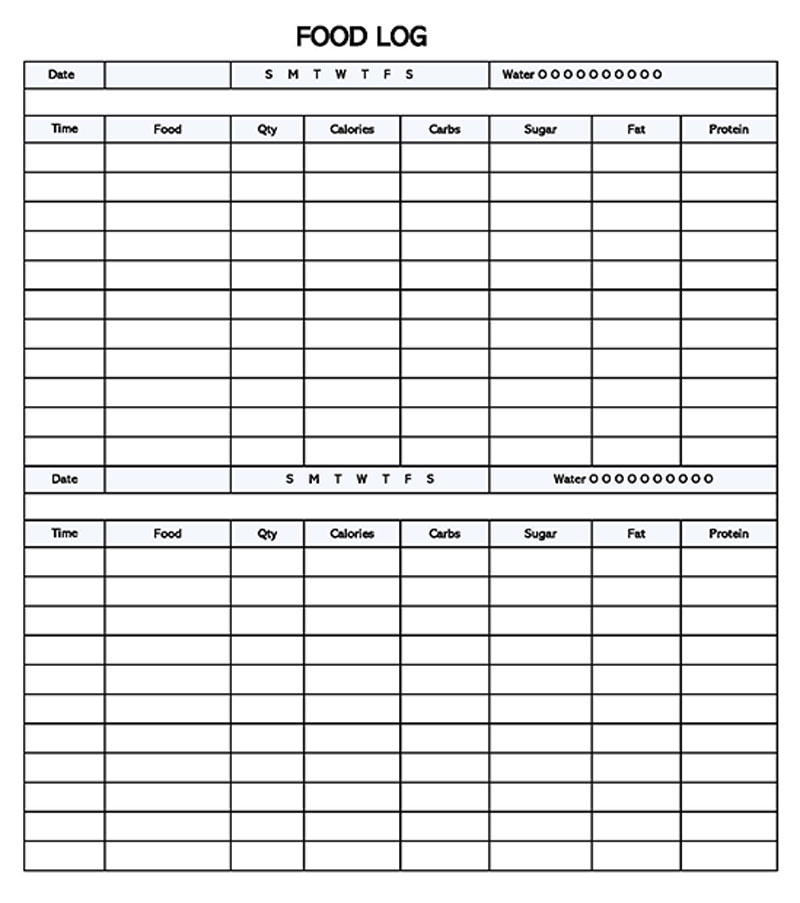
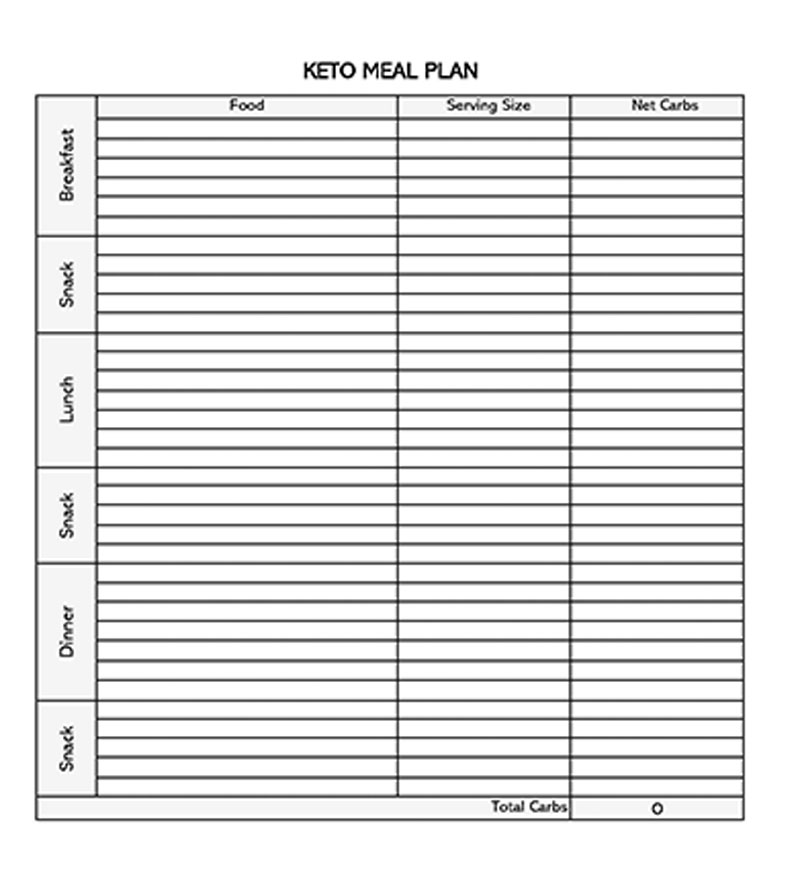
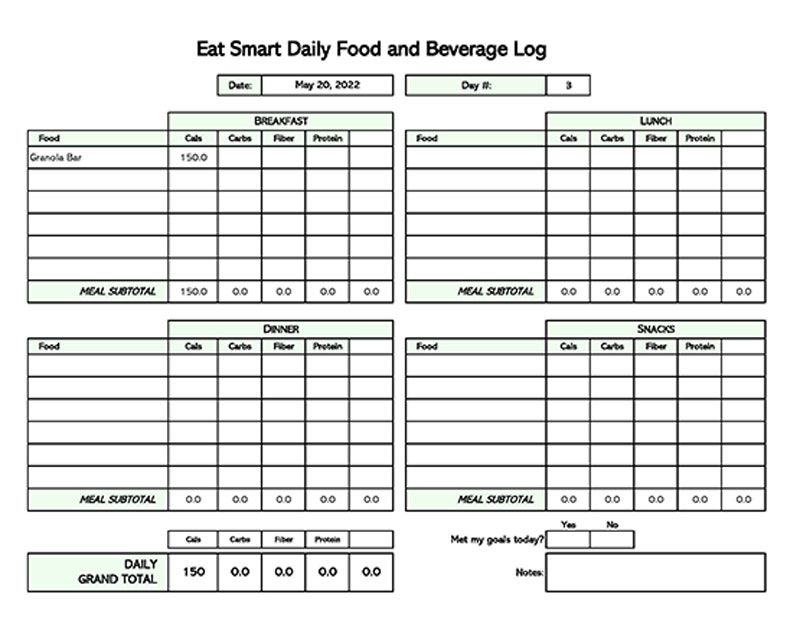
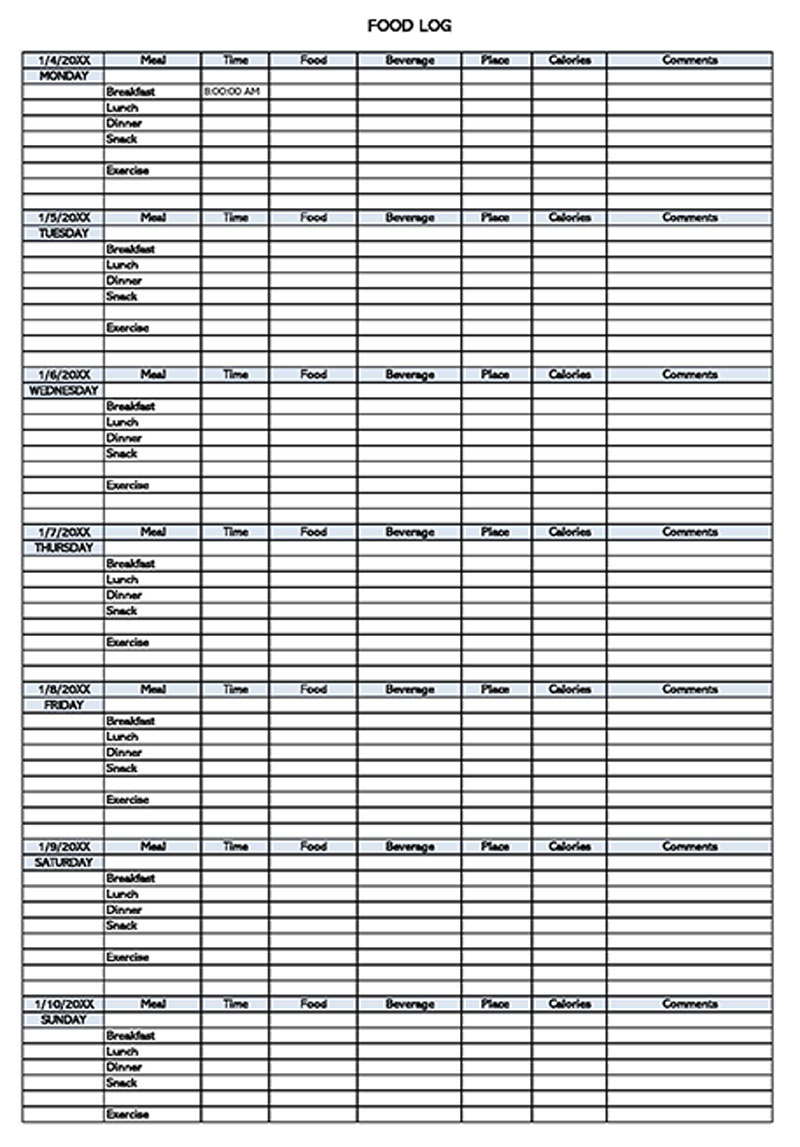
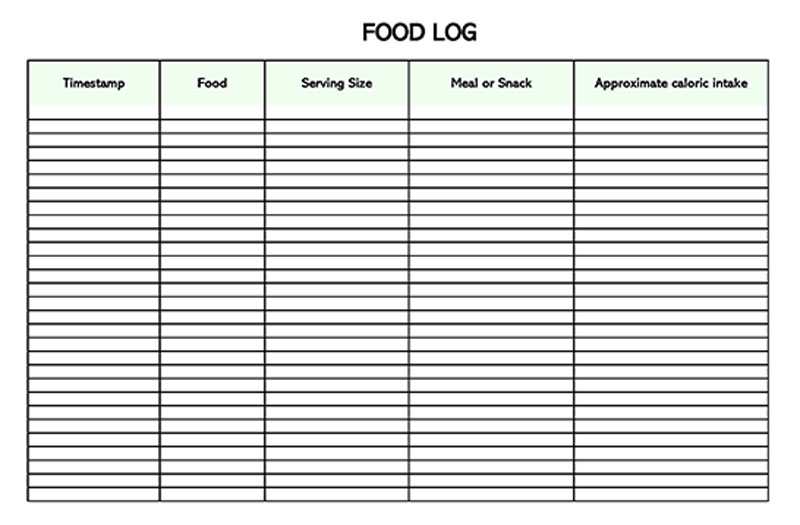
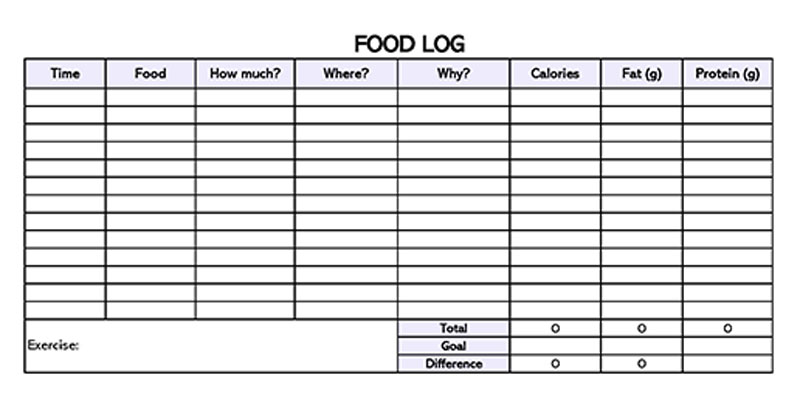
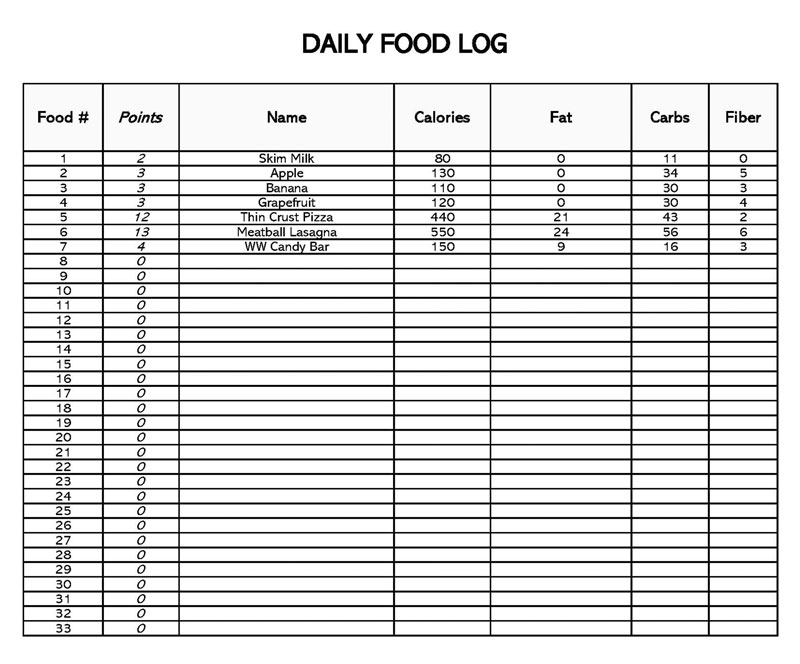
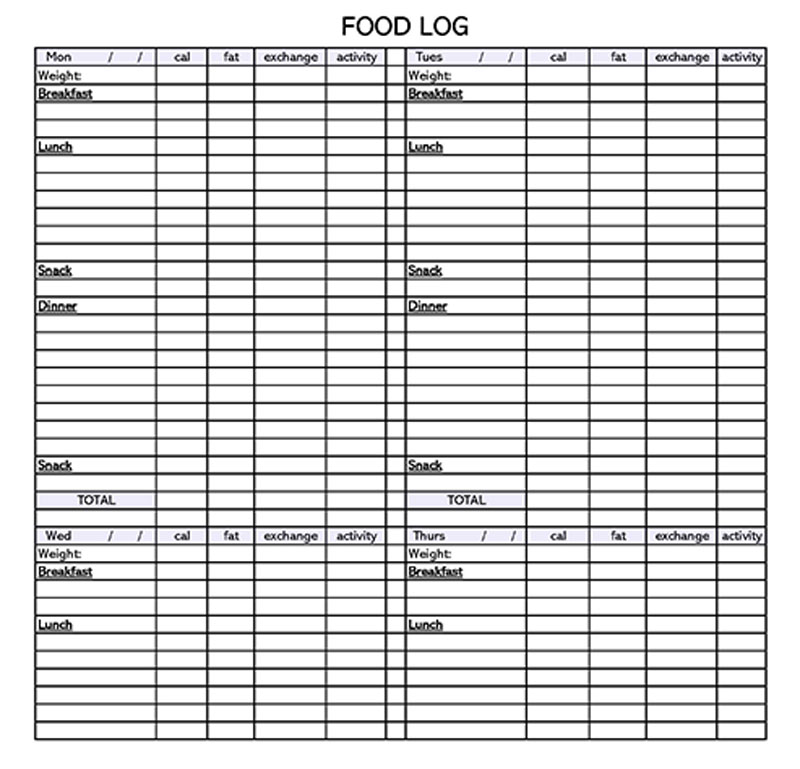
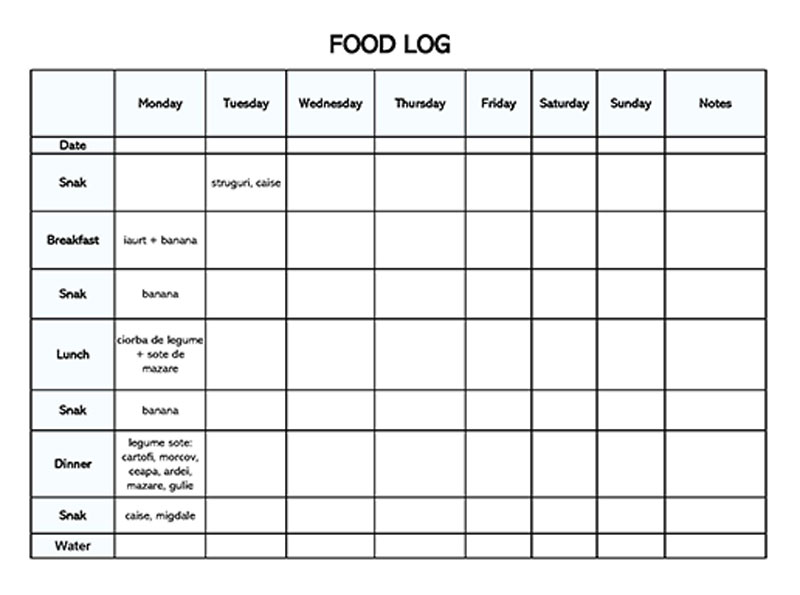
Importance
By comprehending the psychology behind why and when you eat, keeping a food journal can help you develop a positive relationship with food. It also helps keep you accountable by ensuring that you document each of your meals. It assists you in recognizing instances when you have veered from your diet to get you back to your routine. Finally, a comprehensive log gives you a clear, honest picture of what you eat and enables you or your dietitian to make necessary changes to your diet.
It also helps you identify your favorite foods and foods that you do not enjoy. However, keeping a food diary can make your eating disorder worse if you have obsessive eating habits, a food phobia, or feel ashamed, guilty, or afraid of your eating habits. Remember that the log should only aim to aid positive lifestyle changes.
What Should be Included?
A well-written template should be informative for you and your professional healthcare provider. Understanding the details that should be included in the logs will help ensure that they are comprehensive. It will also make it easy for you to analyze your eating habits.
The following information should be included:
Quantity of the food
The log should begin by listing how much food and drink you consume each time. You can measure that quantity in volumes such as 1 cup, weight such as 2 ounces, or the number of items consumed, such as 2 hamburgers. The food should be recorded immediately after eating.
Type of food
Next, you should specify the food or drinks consumed. Any extras that come with the item consumed and the meals should also be recorded, such as condiments like ketchup or sauces and dressings. Food type is vital to the tracking process as it provides information on what you eat.
Place of having food
The template should also contain information on where you consume food. You should be as specific as possible; for instance, if you eat food at home, it should be indicated precisely where it was taken, for example, in the bedroom, on the dining room table, or on the living room table. It helps track your existing eating habits and their impact. If you go out to eat, the name of the restaurant and whether the food is taken home or eaten in the car should be mentioned.
Partner of that meal
You should identify who you are sharing the meal with. If you are eating alone, then record this in the log. If you are eating with a family member or a friend, indicate the individual’s name. You may also state that you are having the meal along with one or more coworkers at your place of work. These people are influential because they have the power to affect your eating habits and can either make it possible for you to eat healthier meals or not.
Activity while eating
The log template should indicate any activities carried out while eating or drinking. The activities may include working, playing video games, reading, watching television, and scrolling through social media, among others. Some activities are linked to people’s good or bad eating habits, and therefore, this information is critical to determining how the patterns or habits are impacted.
Mood
Your mood while eating or drinking should also be indicated. It may impact what and when you eat. For example, you can indicate a happy, sad, or bored mood when eating certain meals. It shows your attitude towards each kind of food.
Any meal that is skipped
Finally, any skipped meals or components that your diet is missing should be indicated. It may have an impact on how much food you consume. For example, you may indicate a lack of vegetables, fiber, or other essential components of a healthy diet in your daily meals.
Some Basic Tips
It would be best to consider specific tips when keeping a log sheet for food. These tips will help ensure that your log is not difficult or time-consuming.
They include the following:
Specify the period of record-keeping
You should determine the specific period for the data to be recorded. It can be a day, a week, two weeks, or even as long as a month. Keeping the log for at least a week can provide a vivid picture of your eating habits.
Record without delay
The details should be recorded immediately when the food is consumed, as reliance on memory at the end of the day may be problematic, especially if you had a busy day. It may also be harder to track snacks as you usually eat them on impulse.
Write down everything
Snacks consumed or a small bite should also be recorded. Whether it is something small or a full meal, you must mention everything. Writing down everything about your eating habits helps you identify food allergies or sensitivities to particular food items. It will also help you keep track of your calorie, carbohydrate, and sugar intake over time. Lastly, it will help you monitor your weight loss efforts, malnutrition, and overeating habits.
Consider filler over flavor
It will help if you consider refraining from eating certain filler foods. Instead, foods with more flavor should be considered healthy substitutes. Such subtle changes can help your weight-loss efforts.
Be specific
The log should be as specific as possible to capture every detail of your eating habits. For example, ingredients, spices, seasoning, and portion sizes are all details that provide a vivid picture of how you consume meals. Using measurements or a food scale can also provide more information about your eating and drinking habits. Alternatively, you can compare food portions to items such as the size of your palm or golf ball.
Be honest
The best way to ensure that the log is effective is to maintain honesty throughout the entire process. Often, you are the only individual with access to the log. It will help you make gradual and realistic dietary changes. You will also make more consistent changes to your bad eating habits.
Advantages and Disadvantages
Before you create a log template for recording your meals, consideration of the advantages and disadvantages of using it should be made. Understanding them will allow you to decide whether the effort is worthwhile. Additionally, it will also help you provide adequate information to medical professionals.
The following are the advantages and disadvantages of a food diary:
Advantages
There are a few advantages associated with keeping the log. You must identify them to help determine whether creating them would be beneficial. It will also ensure that you use it for the right reasons.
The following are the advantages:
- Builds healthy habits: It helps improve your eating habits by creating conscious awareness of what you eat and drink. Through the data collected, you can make mindful, healthy meal choices. It also enables you to identify gaps in your eating patterns that may be impacting nutritional intake. You can identify and incorporate missing nutrients into your diet by using this information.
- Helps to control weight: Studies show that the log can help you control your weight by increasing your awareness of what and how much you eat. The link between food and feelings also helps you find methods to overcome emotional eating. It can also be used to gain weight. It can help show how much you eat and what you can increase to reach a healthy weight.
- Identify food sensitivities: It can help you identify foods you are sensitive to. Conditions such as food allergies, acid reflux, or non-celiac gluten sensitivity are easily determined. Food with ingredients that may trigger an allergic reaction is also identified using the log template.
- Helpful for dietitian: Your dietitian can use the log template to understand what you currently eat every day. It can also be used as a monitoring tool to determine whether you are following the recommended diet. Your dietitian may recommend long-term use of it for lasting changes to be observed or until you reach your health or weight loss goals.
Disadvantages
Creating the log is not a task that anyone can do, as it can do more harm than good for some people. You must understand how the sheet can negatively impact you. This requires significant self-reflection on your part.
The following are the disadvantages of using a log for recording meals:
- Triggering: If you are an individual who has a history of an eating disorder like bulimia or anorexia, it is not a good idea to monitor your food. If you have recovered from your disorder, you are likely to relapse. It may be even worse if you are still struggling with the disorder. A health professional should instead be consulted.
- Leads to negative thoughts: If you are likely to develop negative thoughts like guilt or shame due to the log, you should avoid creating it. You can suffer from depression and suicidal tendencies due to these negative thoughts. You should also consider other mental disorders that may be triggered by writing it.
- May lead to getting fixated: Another negative impact is a fixation on specific details, like the quantity of food you consume. Fixation can lead to the development of mental disorders. Instead of keeping the log, consider practicing mindful eating.
Conclusion
A food log template enables you to monitor your meals. It helps ensure that you provide a comprehensive outline of your eating habits and tendencies to help you meet your goals. However, you must understand the circumstances that will facilitate the appropriate use of this sheet to ensure that it does not become a trigger for other issues like eating disorders or negative thoughts. An essential aspect of recording details in the sheet is honesty. You can get an accurate picture of your eating habits by keeping an honest record.



